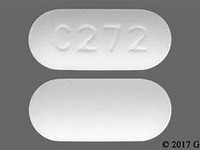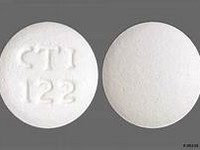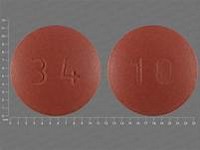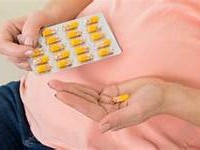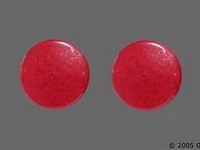procainamide hydrochloride
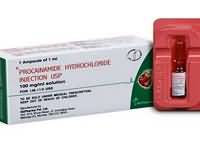
CLINICAL USE
Anti-arrhythmic agent:Treatment of ventricular arrhythmias, especially after myocardial infarctionAtrial tachycardia
DOSE IN NORMAL RENAL FUNCTION
Slow IV injection: 50 mg/min (100 mg with ECG monitoring), repeated at 5-minute intervals until arrhythmia is controlled; max dose 1 gInfusion: 500–600 mg over 25–30 minutes with ECG monitoring, then maintenance of 2–6 mg/minute. If required start oral anti-arrhythmics 3–4 hours after infusion
PHARMACOKINETICS
Molecular weight :271.8 %Protein binding :15–20 %Excreted unchanged in urine : 30–70 Volume of distribution (L/kg) :1.48–4.3half-life – normal/ESRD (hrs) :2.5–5/9.6–11.3 DOSE IN RENAL IMPAIRMENT
GFR (mL/MIN)
20 to 50 : Dose as in normal renal function 10 to 20 : Dose as in normal renal function <10 : Normal loading dose. Maintenance dose according to response, lower doses or longer dosage intervals may be required DOSE IN PATIENTS UNDERGOING RENAL REPLACEMENT THERAPIES
CAPD :Dialysed. Dose as in GFR <10 : mL/min HD :Dialysed. Dose as in GFR <10 : mL/min HDF/high flux :Dialysed. Dose as in GFR <10 : mL/minCAV/VVHD :Dialysed. Dose as in normal renal function IMPORTANT DRUG INTERACTIONS
Potentially hazardous interactions with other drugsAnti-arrhythmics: amiodarone increases procainamide levels, increased risk of ventricular arrhythmias – avoid concomitant use; increased myocardial depression with other anti-arrhythmicsAntibacterials: increased risk of ventricular arrhythmias with moxifloxacin – avoid concomitant use; concentration increased by trimethoprimAntidepressants: increased risk of ventricular arrhythmias with tricyclicsAntihistamines: increased risk of ventricular arrhythmias with mizolastine– avoid concomitant useAntimalarials: increased risk of ventricular arrhythmias with artemether/lumefantrine – avoid concomitant useAntipsychotics: increased risk of ventricular arrhythmias with phenothiazines and any antipsychotics that prolong the QT interval; avoid with amisulpride, pimozide and sertindoleAtomoxetine: increased risk of ventricular arrhythmiasBeta-blockers: increased myocardial depression; increased risk of ventricular arrhythmias with sotalol – avoid concomitant use5HT 3 antagonists: increased risk of ventricular arrhythmias with dolasetron – avoid concomitant use; avoid with tropisetronMuscle relaxants: enhanced effect of muscle relaxants Ulcer-healing drugs: levels increased by cimetidine ADMINISTRATION
Reconstition
– Route
IV bolus, IV infusion
, IM Rate of Administration
Bolus: 50–100 mg/minute Infusion: 2–6 mg/minute Comments
Stable in glucose 5% Dilute to a concentration of 2 mg/mL and give at a rate of 1–3 mL/minute, or to a Procainamide hydrochloride.PROCAINAMIDe HYDROCHLORIDe 607concentration of 4 mg/mL and give at a rate of 0.5–1.5 mL/minuteStability of solution can be improved by adding sodium bicarbonate to glucose solution OTHER INFORMATION
For optimum response, plasma concentration should be 3–10 mg/L; severe toxicity has been noted at concentrations above 12 mg/LActive metabolite is N-acetyl- procainamide (NAPA) which is 80% renally excretedHaemofiltration can be used in cases of procainamide poisoningHalf-life depends on acetylator status of patientCan cause systemic lupus erythematosus in up to 30% of patients with long-term use CAPD removes 19% of procainamide and 24% of NAPA.
See how to identify renal failure stages according to GFR calculation
See how to diagnose irreversible renal disease
Home


